A tamper switch is a supervisory device that ensures your fire sprinklers are ready to save lives
Most building fire sprinkler systems are essentially made up of various fire sprinkler heads, pipes, fittings, and valves — and in some cases, a fire pump. During a fire, the sprinkler responds to the rapid rise in temperature and, aided by open valves, allows water to flow freely through the pipes towards the fire. When supplied with enough water, these fire protection systems can save lives and thousands of dollars in property damage. But while sprinklers are nearly fail-proof, the valves are particularly prone to human error. Enter the tamper switch.
What exactly is a tamper switch? In this blog, we dive into that question and describe three particular valves most commonly monitored by them. We also describe the different tamper switches used to monitor those valves, starting below.
The three most common types
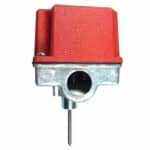 |
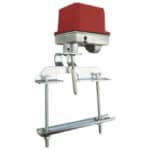 |
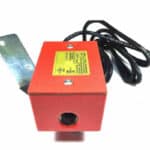 |
| Butterfly and Post Indicator Valve Tamper Switch | OS&Y Valve Tamper Switch | Plug-In Special Purpose Tamper Switch |
Let’s start with an important warning: removing, replacing, or otherwise interfering with a fire protection tamper switch can render it ineffective and should only be carried out by a qualified professional. It’s always better to be safe than sorry. With the disclaimer out of the way, let’s proceed.
A tamper switch is a mechanical and electrical device connected to a fire protection valve that signals a warning if the valve partially or fully closes. Regardless of the type of switch, they all function similarly. These devices feature an actuating unit, usually a lever or cable with a resting position. When the valve closes, the actuating unit breaks an electrical circuit that triggers a signal.
It’s like a light bulb: when the light switch is on, a circuit is formed and the bulb shines brightly. When the switch is turned off — or, in the case of a fire protection tamper switch, the valve closes — the circuit is broken. For tamper switches, this broken circuit creates a signal. In most jurisdictions, that does not mean the fire alarm goes off (though check with your Authority Having Jurisdiction (AHJ) to make sure of your local rules); rather, the switch sends the signal to a fire control panel that notifies people and creates a record of the incident.
As implied earlier, a tamper switch is a crucial add-on because the fire protection system only works if an ample water supply is available. Therefore, knowing the status of the various valves in the system can mean the difference between a functioning fire sprinkler system, or this…
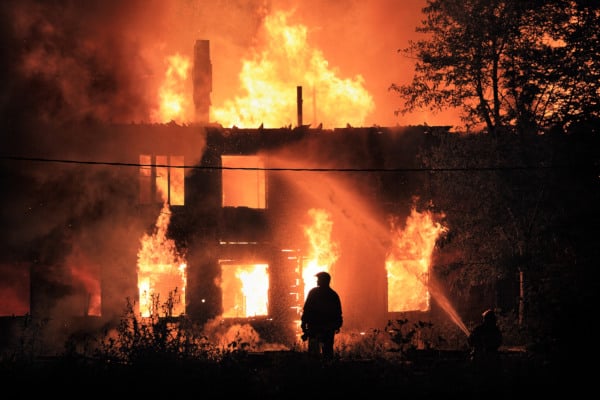
As we’re sure you can imagine, there are both malicious and unintentional reasons for a closed valve. Before burning a building, the first thing a savvy arsonist might do is shut off the water supply to the sprinkler system. But with a tamper switch, this change of status in a monitored control valve alerts relevant parties.
Nevertheless, system maintenance is a far more common (too common!) reason for a closed valve. If the system needs de-activation to change a component (such as replacing a fire sprinkler head), the control valve(s) will be shut, triggering the tamper switch to signal an event. This trigger creates a record for facilities maintenance or the sprinkler contractor to reference and help ensure control valves are reopened before the job is complete.
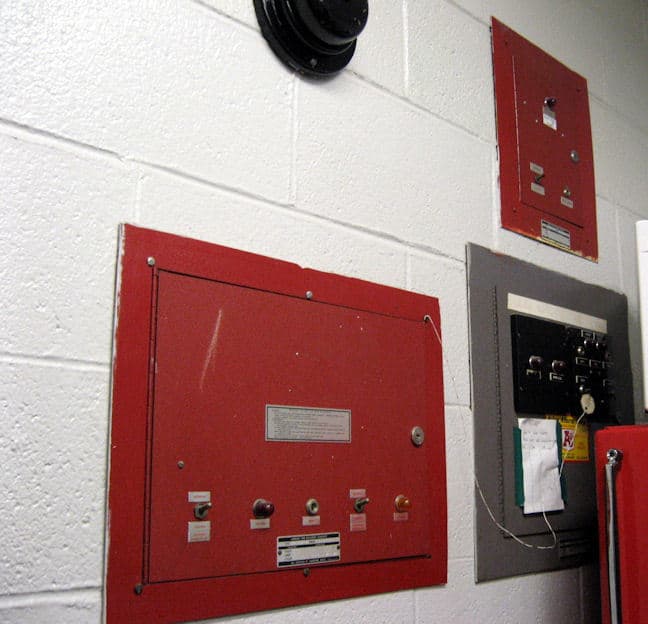
There are many makes and models of supervisory devices available that go with different valve types. Let’s highlight three primary versions:
- Outside Screw and Yoke (OS&Y) Gate Valve Tamper Switch
- Butterfly Valve or Post Indicator Valve Tamper Switch
- Special Purpose Plug-In Tamper Switch
The OS&Y Valve is one potential type of control valve; the gateway between the water supply and your building’s fire protection system. You can learn more about them here. The important thing to note for our purposes is that the valve must be open — which is visually identifiable because the screw or stem sticks up out of the top of the valve — for the building to have a charged and ready sprinkler system. The OS&Y tamper switch provides added peace of mind by electrically monitoring the valve’s status.
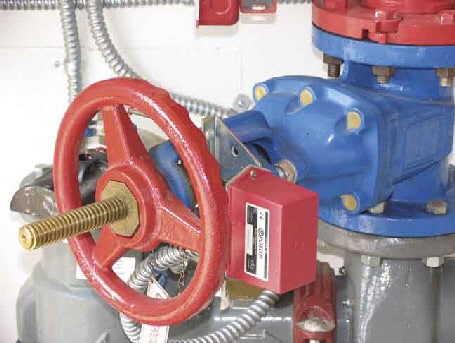
The next device works for two different types of control valves. The first is a very common valve in most modern sprinkler systems called a butterfly valve, named after the way the valve’s gate turns on a vertical axis instead of moving up and down. Learn more about these valves here.
The butterfly valve is also used to shut off the water supply at various points, and, like the OS&Y valve, a closed butterfly valve means the system is not ready for action. The supervisory device is on the lookout for a closing butterfly valve and signals the control panel when it happens. One point of contrast with most OS&Y valves is that some butterfly valves come with preinstalled tamper switches.
In contrast, a post indicator valve is located outside the building, and its gate is underground, at the bottom of the stem (or post) in the image below. Similar to an OS&Y valve’s raised screw, the post indicator offers a visual ‘OPEN’ sign identifying the status of the underground gate valve. But since monitoring the ‘OPEN’ sign 24/7 is unrealistic, a tamper switch is added as a fail-safe.
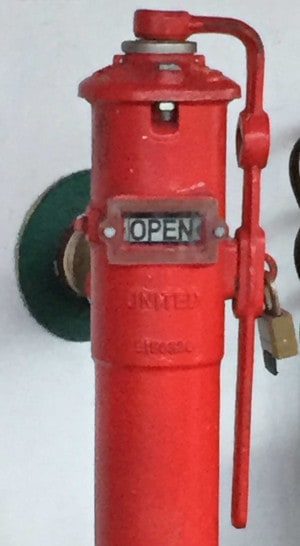
Finally, a Special Purpose Supervisory Switch is used when no other device will do. It features an electric cable wrapped around the valve’s stem or handle and plugged into an inlet on the tamper switch. When the handle turns, the cable dislodges from its plug, breaking the circuit and sending a signal to the control panel.
To revisit the table from the beginning of this blog (which is replicated below), you now know the difference between the three models. QRFS proudly offers Safe Signal tamper switches. They feature weather-resistant bodies for indoor or outdoor mounting, tamper-resistant screws with a special key stopping the housing from being opened unintentionally, and a single conduit entrance for easy installation. QRFS has all three models in stock and ready to have them in your hands fast.
Click any of the products below to get started.
This blog was originally posted at QRFS.com by Jason Hugo on February 19, 2016, and updated on April 22, 2022. If you like our informative content, see the rest of our blogs by visiting Thoughts on Fire or connect with us on Facebook or Twitter.


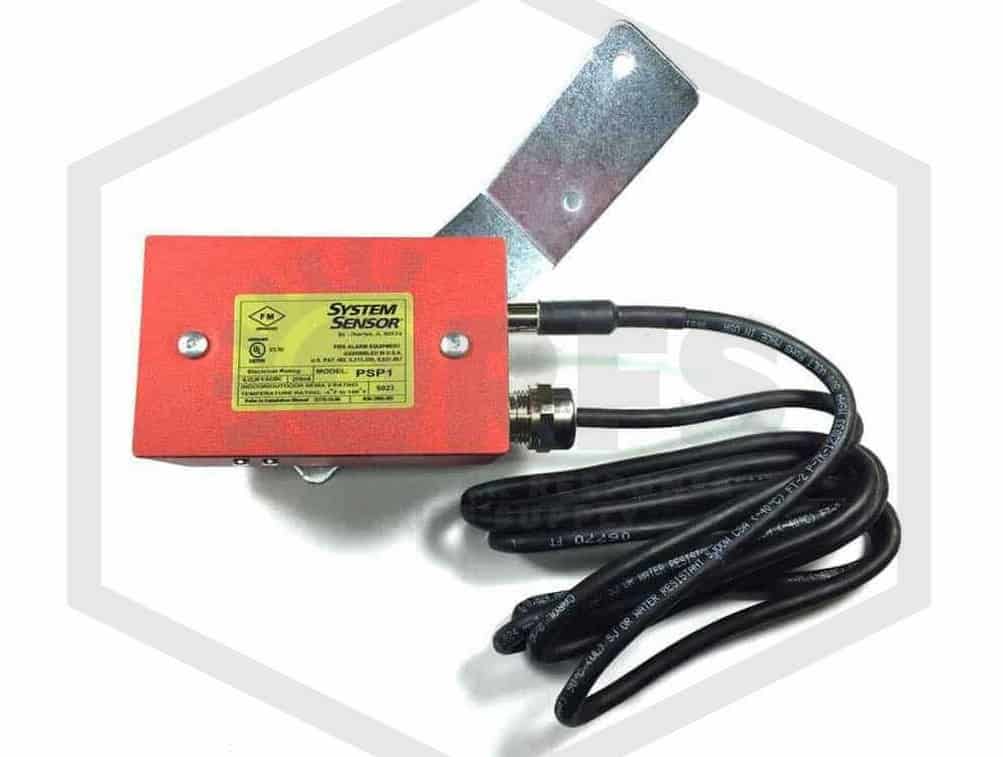

Could you please provide me a NFPA code that recommend to install tamper switch and could you please let me necessary location (LIKE Zone Control valve and pump room)..
Abdul — Thanks for reaching out. For code questions like this, we recommend submitting your question through QRFS Ask A Pro. Click the link to submit your question with some information about your building or system, and a fire protection professional will provide a detailed answer based on standards and codes. Our pros include AHJs, contractors, engineers, and code experts with 150+ years of combined experience!
Code requirement for using a tamper switch and a flow switch for a sprinkler head installed in an elevator pit. Tamper switch utilized to turn off water flow after head was activated by heat from a fire and in order to replace the sprinkler head. Flow switch, programmed to let the fire department know where the fire is located in the elevator pit, which is a masonry enclosed location.
Henry — Thanks for reaching out. For code questions like this, we recommend submitting your question through QRFS Ask A Pro. Click the link to submit your question with some information about your building or system, and a fire protection professional will provide a detailed answer based on standards and codes. Our pros include AHJs, contractors, engineers, and code experts with 150+ years of combined experience!
Is there a WIRELESS tamper notification option ? I have a situation where a Co. RIPPED out my wire during a PIV replacement and the wire has been broken (and 4-5 feet down) .
Ron — yes, there is a company called DMP that makes these, though we can’t attest to their quality or reliability of the signal, as we don’t carry them. Potter switches are a known quantity. As far as a company ripping out the wire, we’d imagine the company that did that should be on the hook for that damage. Best of luck!